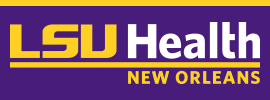Emergency Medical Services Utilization of Medication for Opioid Use Disorder: A Narrative Review of the Literature and Analysis of Prehospital Buprenorphine Protocols
Document Type
Article
Publication Date
4-21-2025
Publication Title
Prehospital Emergency Care
Abstract
Objectives: This narrative review examines the current literature and prehospital buprenorphine protocols, discusses the available outcomes data of existing protocols, identifies protocol variations, and highlights challenges and opportunities associated with prehospital medication for opioid use disorder (MOUD) initiation. Methods: PubMed was searched for articles from 1/1/2010 to 2/1/2025, using keywords “Prehospital Buprenorphine,” “Emergency Medical Services Buprenorphine,” “EMS Medication for Opioid Use Disorder,” and “Prehospital MOUD.” All EMS protocols from the website http://www.emsprotocols.org (Acid Remap, LLC) were reviewed, supplemented with internet searches. A data dictionary was developed to categorize protocol characteristics; categories of responses included minimum Clinical Opiate Withdrawal Scale (COWS) scores, initial and maximum buprenorphine dosages, adjunct medications for withdrawal symptoms, online medical control (OMC) consultation requirements, minimum age, contraindications and exclusion criteria, and post-induction follow-up. Results: Six statewide prehospital MOUD protocols were identified, along with regional protocols in 21 states and Washington, DC. Details were available for 42 state or regional protocols. Initial dosing across all protocols ranged between 4 and 24 mg. Maximum dosing ranged between 8 and 48 mg. The median initial and total dosage was 16 mg and 24 mg, respectively. Adjunctive medication for withdrawal was available in 61.9% of protocols. Treatment with MOUD was limited to mobile integrated health/community paramedicine programs in 19% of protocols. Otherwise, administration was permitted via standing order in 52.4% and required physician authorization in 26.2% of protocols. The minimum COWS scores ranged between 5 and 8, with 71.5% of protocols requiring a COWS score >7. Most (59.5%) protocols specified 18 years as the minimum age, while 23.8% specified 16 years. Buprenorphine was contraindicated for pregnant patients in 38% of protocols, while 9.6% of protocols required OMC consultation. Ten peer-reviewed studies evaluating EMS MOUD protocols outcomes were identified, most of which reported successful initiation, linkage to care, and retention for significant proportions of patients evaluated for opioid overdose and/or opioid withdrawal symptoms. Conclusions: Prehospital MOUD protocol design varies significantly, and best practices remain unknown, particularly regarding protocol inclusion criteria, dosing regimens, adjunctive medications, and resources to ensure continuity. The available data suggest protocols with more permissive inclusion criteria and comprehensive service provision are associated with higher rates of linkage to care.
PubMed ID
40162803
Recommended Citation
Bornstein, Kasha and Rayburn, David, "Emergency Medical Services Utilization of Medication for Opioid Use Disorder: A Narrative Review of the Literature and Analysis of Prehospital Buprenorphine Protocols" (2025). School of Medicine Faculty Publications. 3693.
https://digitalscholar.lsuhsc.edu/som_facpubs/3693
10.1080/10903127.2025.2486292


